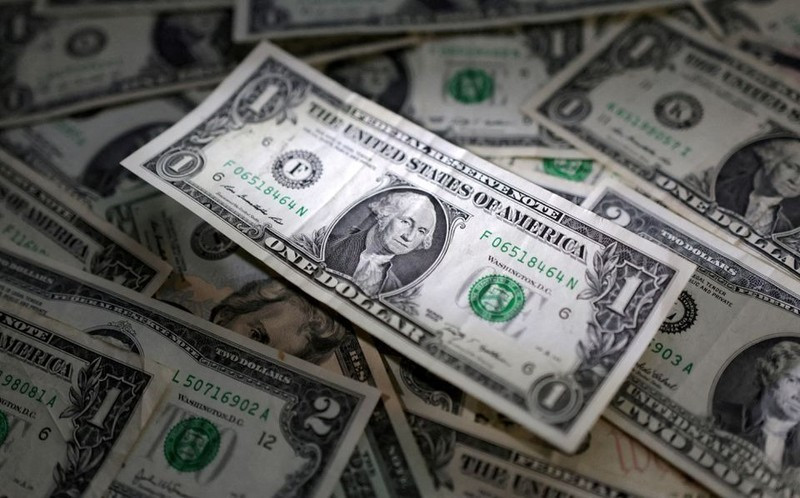According to calculations by the US House Budget Committee, the current debt equates to 104,497 USD per American, 266,275 USD per household, and each child "bears" a debt of 483,889 USD. Over the past 12 months, the debt has increased by 2.35 trillion USD, with the rate of increase averaging 74,401 USD every second. This debt growth rate is much faster than economists had predicted, as the costs of recently enacted federal programmes have exceeded projections.
Head of the Committee, Congressman Jodey Arrington, regards this development as a “dubious milestone in the fiscal decline of the most powerful and prosperous nation in history”.
Risks to the economy
The US national debt has surged recently under President Joe Biden's administration and his predecessor Donald Trump. At the end of former President Trump's term, the national debt rose from 8.4 trillion USD to 27.7 trillion USD, with more than half of the borrowing related to measures during the COVID-19 pandemic.
This trend has continued under President Biden’s term, with the national debt surpassing the 35 trillion USD mark. Although borrowing interest rates decreased somewhat during the first half of Biden's term, they are accelerating. In just the first seven months of 2024, public debt increased by 1 trillion USD.
Concerned about US fiscal policy, the International Monetary Fund (IMF) has warned that the US budget deficit and debt levels pose "increasing risks" to the global economy.
According to the IMF, such high deficits and debt could lead to higher financing costs and increase the risk of smooth transitions of maturing obligations. The IMF also noted that these chronic financial deficits represent significant and persistent policy misalignments, that need urgent resolution.
The "public debt bubble" in the US is expanding faster than experts predicted because the world's largest economy has had to spend heavily to combat inflation and boost the economy during and after the recent pandemic. Even with government measures in place, many experts believe that taxing the wealthy or cutting budgets for health and social security programmes will not significantly reduce the current massive public debt.
A report by the US Congressional Budget Office (CBO) in June 2024 indicated that the country's public debt will reach 56 trillion USD by 2034, due to higher budget spending and interest payments compared to tax revenue. Data shows that on average, the US Treasury paid about 89 billion USD in interest on outstanding public debt in March 2024, which amounts to approximately 2 million USD per minute.
Furthermore, the Federal Reserve's (FED) decision not to lower interest rates exacerbates the government's public debt situation. Various programmes supporting the economy, such as the Inflation Reduction Act (IRA), which funds billions of USD in support for technology, electric vehicles, and chip factories, have worsened the public debt situation.
Even the New York Times noted that both presidential candidates, Donald Trump and Kamala Harris, did not mention the budget deficit and public debt issues much during their campaigns, showing that the "public debt bubble" may continue to grow, in the future.
However, the US government believes that the current public debt level is reasonable compared to the size of the economy. From April to June 2024, the US Treasury borrowed 234 billion USD, which is lower than expected.
Treasury Secretary Janet Yellen stated, that this figure is reasonable compared to the scale of the US economy. Meanwhile, the White House plans to increase taxes on the wealthy and corporations to reduce the budget deficit by 3 trillion USD.
Concerns over budget deficit
In Europe, public debt in many countries has also been rising. The European Commission advised that France, Italy, and five other countries should face disciplinary measures for exceeding the EU’s budget deficit limit.
In the UK and France, public debt is approaching its highest level in decades, when government spending and budget deficits as a percentage of GDP, are significantly higher than pre-pandemic levels. While economic growth remains sluggish, borrowing costs are soaring, and spending demands continue to escalate, ranging from defence budgets to pensions for the elderly.
France's budget deficit stood at 5.5% of GDP in 2023, up from 4.8% in 2022 and above the EU limit of 3%, of GDP. France's public debt was 110.6% of GDP in 2023. The European Commission predicts this will rise to 112.4% this year and 113.8% by 2025, while the EU limit is 60%. Government bond yields have surged recently, as investors anticipate even higher public debt levels.
The French National Audit Office has warned that the worsening public finances and increasing budget deficit are alarming, placing the country at risk if another macroeconomic shock occurs. The second-largest economy in the Eurozone must reduce its public deficit.
Delays in implementing substantial structural reforms have exacerbated the cost of public debt on top of an already serious problem. This has hindered other expenditures, reduced investment capacity, and left France vulnerable to potential new macroeconomic shocks.
In the UK, public debt has also risen to 104% of GDP, from 86% in 2019 and 43% in 2007. At the end of 2022, the then Prime Minister, announced large-scale tax cuts and borrowing, causing bond yields to skyrocket and plunging the UK financial market into chaos. S&P Global noted, that this turmoil served as a clear warning against policies disregarding public debt issues. After securing a landslide victory earlier this July, the Labour government in the UK has spent much of its first three weeks in office reviewing public debt and managing public policy sectors.
According to Capital Economics, public debt deficits in many developed countries are over 3 percentage points higher than pre-pandemic levels. This is partly due to higher interest rates and increased spending unrelated to COVID-19.
Even Germany, a model of fiscal prudence, has fallen into a budget deficit from a surplus state in the 2010s. After months of tough negotiations, Chancellor Olaf Scholz's three-party coalition recently announced an agreement to adhere to strict borrowing regulations while finding ways to restore growth and boost military spending. In Italy, Prime Minister Giorgia Meloni reassured investors, by announcing a plan to cut spending.
For the first time, US public debt has reached an alarming level, with many European countries also at risk of being "drowned" in public debt. The IMF has warned that the US budget deficit and public debt ratio pose a significant threat to the global economy and must be addressed swiftly. Governments struggling with public debt were advised to implement additional financial measures and adopt more responsible spending to mitigate the rapidly expanding “debt bubble”.















